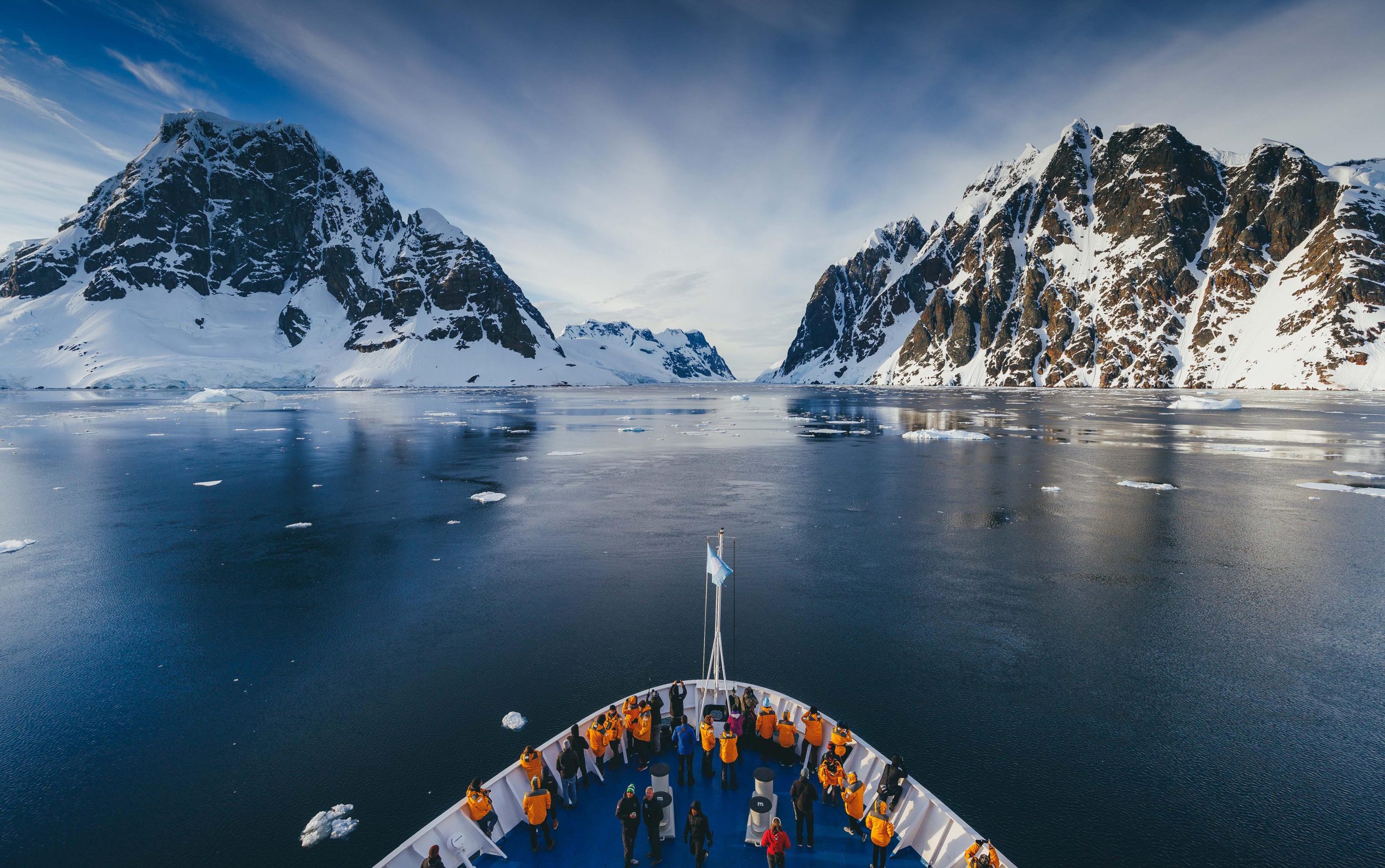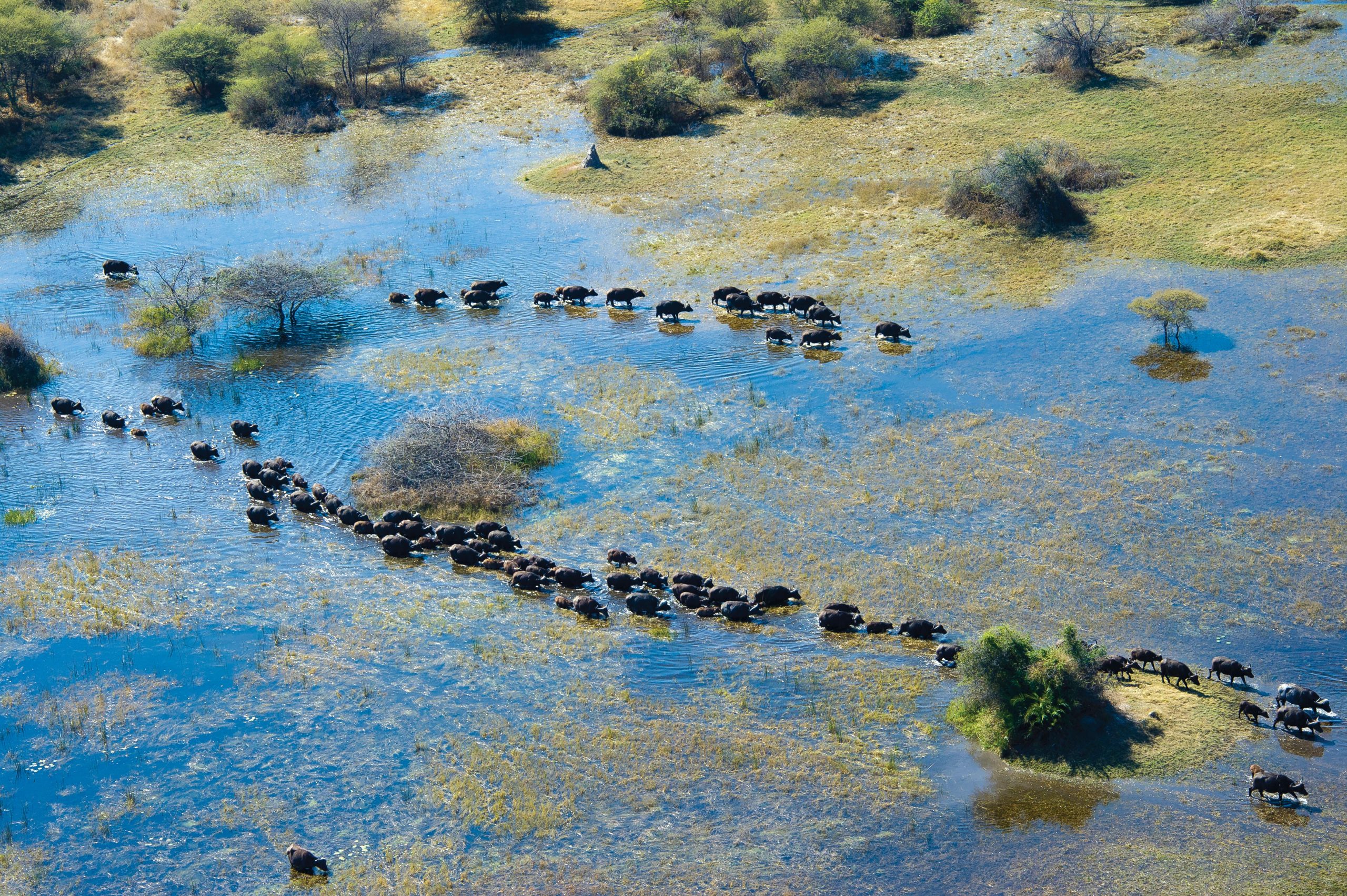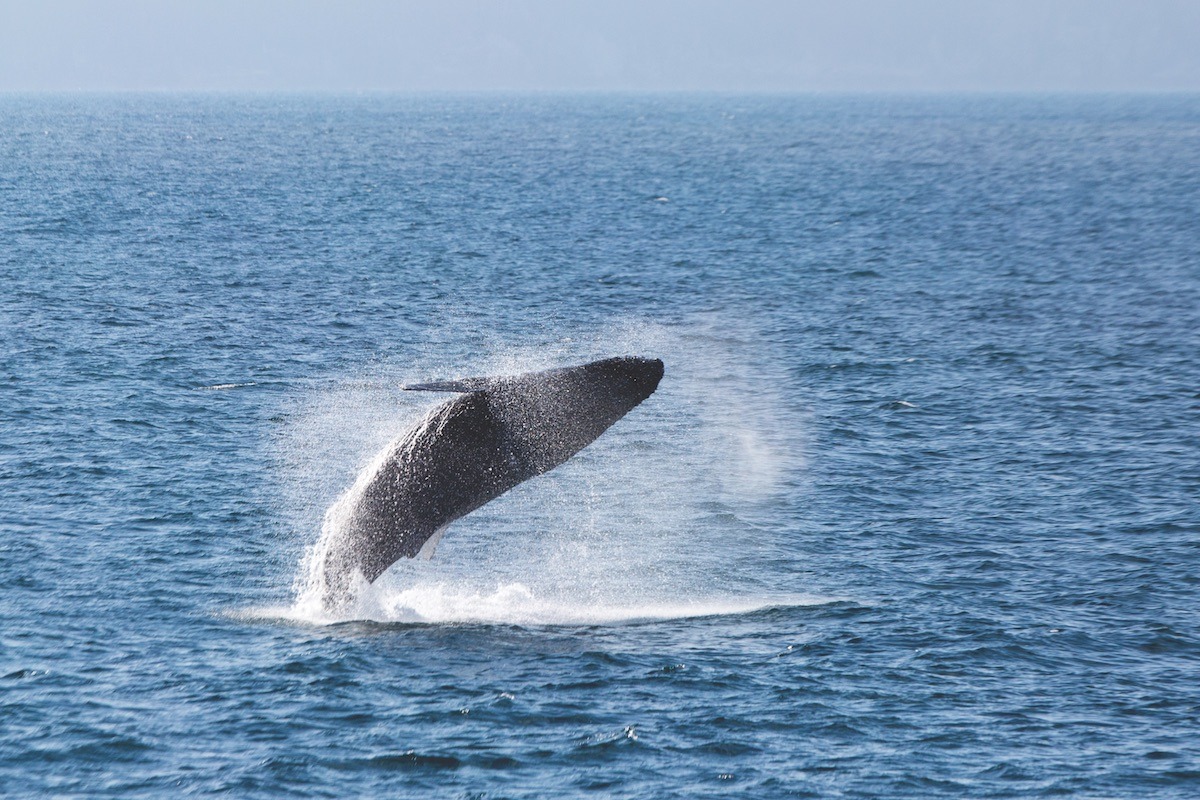
Creatures of the Drake & the Bransfield
All penguins are little people wearing tuxedos. This is a truth that no one can deny. But now I can say authoritatively that king penguins are minor nobility at a society function, while gentoos are busy waiters and maitres d’hotel, waddling officiously back to the kitchen while keeping an eye on us outsiders, too informal in our yellow parkas. Human visitors to a penguin colony are paparazzi, while the flightless birds are definitely the stars of the show.
As incontrovertible as this truth might be, it’s one that you can’t really learn from watching nature documentaries or reading about the rare creatures and delicate ecosystem of the southern polar regions. You have to brave the journey to learn it for yourself.
A trip to Antarctica is more in reach than it ever has been before, with well-established expedition lines like Quark Expeditions, Lindblad Expeditions, and Aurora Expeditions being joined by more luxury-oriented operators like Atlas Ocean Voyages, Silversea, Ponant, and Viking. Regardless of the line, the experience is still on one level as daunting as it was for Ernest Shackleton, even with creature comforts that would put Commandant Jean-Baptiste Charcot (who brought a croissant baker and a hold full of Champagne on his Antarctic voyage) to shame. The sea is still the sea, and the Bransfield Strait and the Drake Passage can be high seas indeed. Yet going past them promises experiences you can’t find anywhere else.
A Subjective Safari
I boarded Ultramarine, Quark’s newest ship, without any real idea of what I was doing. I thought I knew. I’d been on plenty of ships before. I’d even been on safari — but not a penguin safari. Our route went from Ushuaia in Tierra del Fuego due east past Las Malvinas to South Georgia Island, then southwest past Elephant Island and across the Bransfield Strait to the Antarctic Peninsula, turning north at the Danco Coast to head across the Drake Passage back to Argentina. Those were the names on the maps.
Fur seals don’t respect names. I learned this as we approached South Georgia Island. There were streamlined black shapes in the water, darting through the bow wake like round- headed dolphins. On the shore, they revealed another side of their personalities.
Fur seals are delinquents. That grace in the waves might as well be the wheelies popped by a one-percenter motorcycle club roaring into their biker-bar’s parking lot.
“Fur seals, especially this time of year, are highly competitive, aggressive, and even the young ones will sneak up behind you and give you a poke,” says Derek Kyostia, one of the marine biologists on Ultramarine’s expedition team. “Elephant seals, on the other hand, are rock sausages.”
That is, they lie there, for the most part as peaceful as stones, except for the occasional rude noise as they snore … and every so often a roar as they rear up to pick a fight with any other rock sausage in easy reach.
We guests are carefully trained to keep at least 6 feet between us and any wildlife. We’re also carefully trained to keep an eye on each other’s backs and make ourselves as intimidating as possible when the wildlife decides to get too close. With penguins, it’s for their protection. With a seal, anything is possible.
In most parts of the world, spotting wild creatures is difficult because the creatures are shy and avoid humans. In the southern polar regions we have to yell and wave our arms to keep them from nuzzling up to us by surprise.
The penguins rubbing elbows … well, flippers … at their black-tie Antarctic gala don’t seem to mind these uncouth seal gatecrashers, despite the fact that penguins sometimes serve as involuntary playthings for surly, hyped-up fur-seal adolescents. The penguins flourish despite the seals among them — and the skuas soaring hungrily overhead.
Skuas are jackals with seagull costumes outside and the hearts of peacocks inside. They want to be seen, even as they dive into the crowded heart of the colony seeking an unattended egg, stray chick, or injured partygoer for their next meal. Jackals sneak subtly through the underbrush to attack. Skuas announce themselves with loud calls, plummet to the ice, then raise their wings like battle flags while hopping up to their target. Maybe they want to intimidate their prey to death.
There’s no privacy in a penguin colony. The breeding colonies of South Georgia are mind-bending with the sheer number of creatures visible. And audible. And smellable. On the ice of the Antarctic peninsula, colonies are easily spotted from the air because the dapper little folks stain the stark, snowy ground red with their droppings. Everything else for miles is black rock, black seas, and the brilliant white of glacial ice and falling snow.
One of the lessons of an Antarctic expedition cruise is the difference between “remote” and “lonesome.” These rookeries are as densely populated as cities. Humans just don’t get a chance to see them very often.
Human Warmth
The same seems to be true for the creatures beneath the surface of the dark, icy water. On one sea day, Ultramarine is surrounded by families of humpback whales, mostly visible as small puffs from clusters of blowholes. On another day, we spot a family of fin whales, the second-largest whales in the world, who come close to the ship to see what we’re about. The fins and humpbacks are there for the same reason sei whales, southern right whales, minkes, and ….
###
By Grant Balfour
EXCERPT ONLY. CLICK TO READ THE FULL ARTICLE.
This is an excerpt from the latest issue of Porthole Cruise and Travel Magazine. To continue reading, click above for a digital or print subscription.
Grant Balfour
Reporter, mystic, musician, and beekeeper, Grant Balfour has published work in outlets as diverse as Kung Fu Magazine, Biscayne Times, the Australian poetry journal Cordite, and the Weekly World News. His second-favorite beaches include Richard’s Bay, South Africa; Sanur, Bali; Los Mochis, Mexico; the northern bank of the Elbe in Hamburg; and the one five minutes from his home in Florida. His favorite beach is the one between his ears.
You may also like
2014 Brings New Ships, Exotic Destinations, says CLIA
The 2014 State of the Cruise Industry forecast from the Cruise Lines International Association (CLIA
Unforgettable Journeys – A Star-Studded African Safari
The following is a safari excerpt from Porthole Cruise Magazine: My life is a cruise-related j
Porthole Cruise News Briefs -Jan. 12, 2018
Ultra-luxury line Silversea has partnered with ORCA, a leading marine conservation charity, bringing








